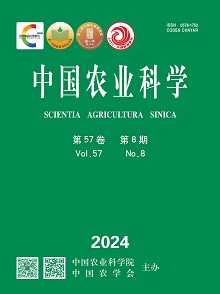【Objective】Ozone stress, high light and high temperature usually exist simultaneously in nature, but little is known about the effect of the combination of three stress factors on plants. So the combined effects of different temperature (26, 40℃), light (800, 1 600 μmol?m -2?s -1) and ozone treatments on the operation of photosynthetic apparatus were investigated to reveal the mechanism of inhibition of photosynthesis, which provided a theoretical basis for reducing ozone injury by regulating the light and temperature. 【Method】 Potted Cabernet Sauvignon grapes were used as materials to be treated with different temperatures (26, 40℃), two kinds of light intensities (800, 1 600 μmol?m -2?s -1) combined with (120±20) nL?L -1 ozone. Chlorophyll a fluorescence parameters were analyzed to investigate the effects of different treatments on the PSII function. 【Result】 40℃ and 1 600 μmol·m -2·s -1 both significantly decreased the maximal photochemical efficiency (Fv/Fm), linear electron transport rate (ETR), the unit area number of reactive centers (RC/CSm) and photochemical quenching coefficient (qP) of leaf under ozone stress. At the same time, the decreased excitation energy partition coefficient (α) of PSI and increased excitation energy partition coefficient (β) of PSII induced a serious imbalance of excitation energy distribution between the two photosystems and caused the damage of photosystem II, and the influence of strong light intensity (1 600 μmol·m -2·s -1) was more significant. The maximal photochemical efficiency (Fv/Fm) under T2 and T3 treatment decreased 10.3% and 38.8% than that under T1 treatment, Fv/Fm under T4 treatment decreased most for 54.8%. PSII quantum efficiency Fv/Fo under T2, T3 and T4 treatment decreased 30.4%, 69.6% and 80.3% than that of T1 treatment, respectively. The number of reaction centers per unit area (RC/CSm) under T2, T3 and T4 treatment decreased 30.4%, 69.6% and 80.3% than that of T1 treatment, respectively, and the probability of that a trapped exciton the moves an electron further than QA by trapped exciton (Ψo) under T2, T3 and T4 treatment decreased 11.2%, 21.6% and 40.8% than that of T1 treatment, respectively. The effective photochemical efficiency Fv'/Fm' under T2, T3 and T4 treatment decreased 7.9%, 22.1% and 42.3% than that under T1 treatment, respectively. Linear electron transport rate (ETR) of T4 decreased most (decreased 62.5% than that under T1 treatment), and ETR under T2 and T3 treatment decreased 17.6% and 37.5% than that of T1 treatment, respectively. The photochemical quenching coefficient (qP) under T2, T3 and T4 treatment decreased 10.7%, 19.8% and 39.5% than that of T1 treatment, respectively. The photochemical reactions share under T2, T3 and T4 treatment decreased 18.8%, 38.8% and 62.0% than that of T1 treatment, respectively. While the antennal heat dissipation share under T2, T3 and T4 treatment increased 15.9%, 36.2% and 60.5% than that of T1 treatment, respectively, and the excess light energy share of T2, T3 and T4 treatment increased 12.5%, 19.1% and 25.2% than that of T1 treatment, respectively, the excitation energy partition coefficient (α) of PSI under T2, T3 and T4 treatment decreased 6.6%, 12.8% and 25.1% than that under T1 treatment, respectively, and the excitation energy partition coefficient (β) of PSII under T2, T3 and T4 treatment increased 4.5%, 8.7% and 17.1% than that under T1 treatment, respectively, and the change trend of imbalance of partitioning of excitation energy between PSⅠand PSⅡ(β/α-1) was consistent with the change of the excitation energy partition coefficient, β/α-1 under T2, T3 and T4 increased 37.7%, 78.3% and 187.8% than that under T1 treatment.【Conclusion】Temperature and light stress increased the sensitivity of PSII activity to ozone stress, and the influence of light stress was more significant, while high temperature and high light stress caused serious damage to photosystem II.











